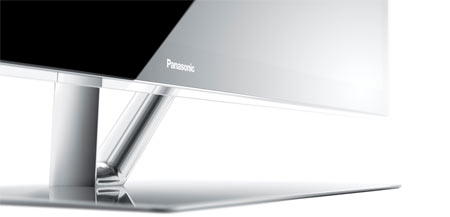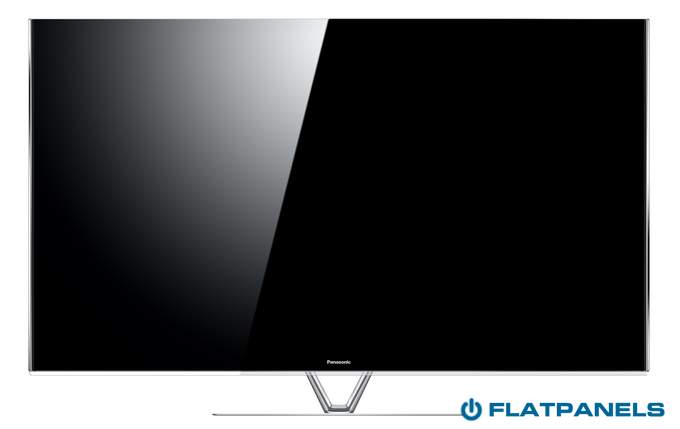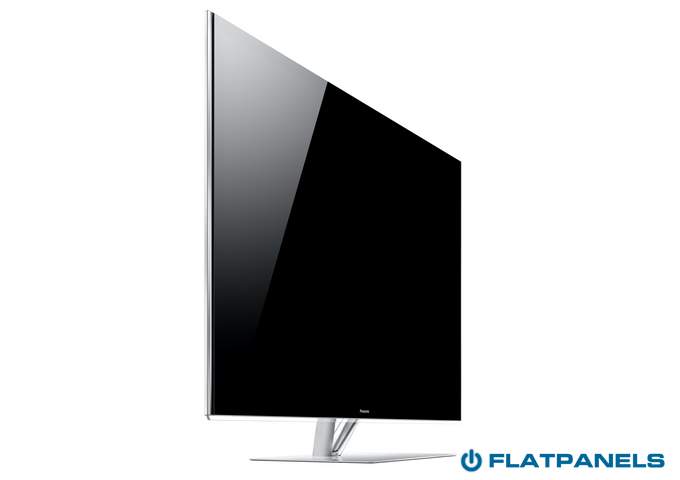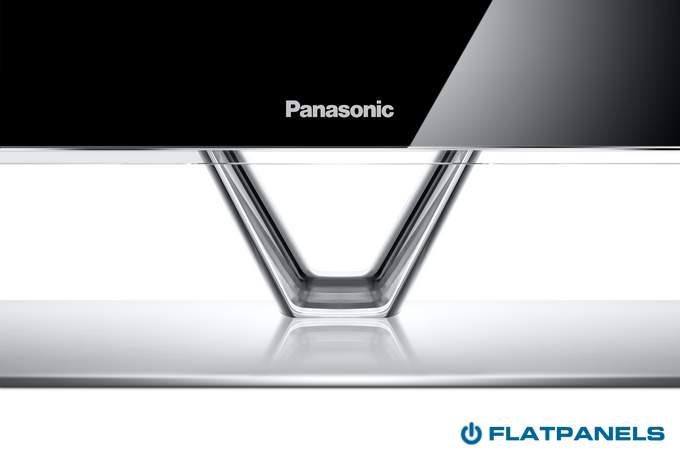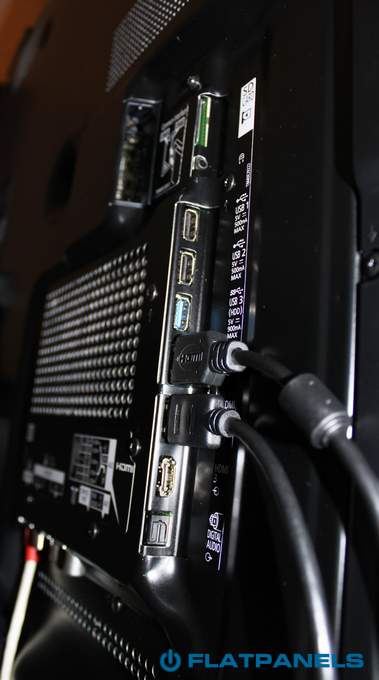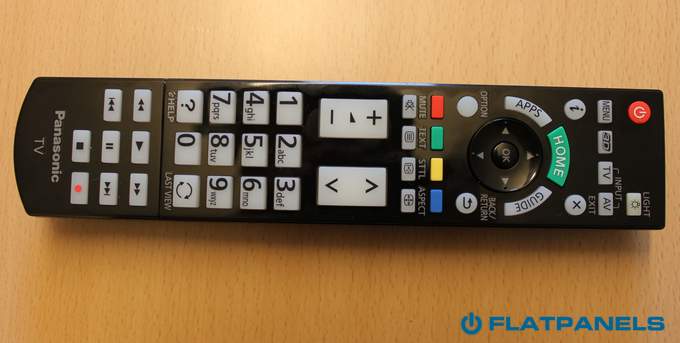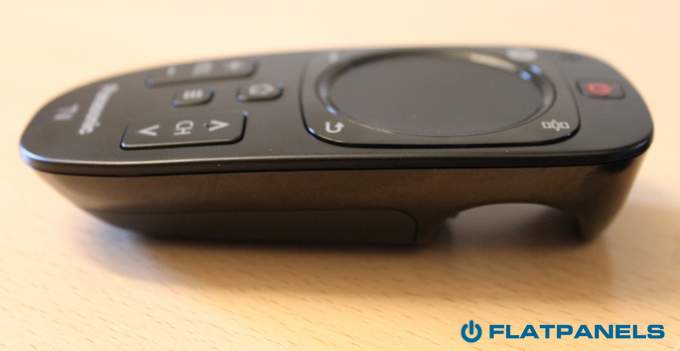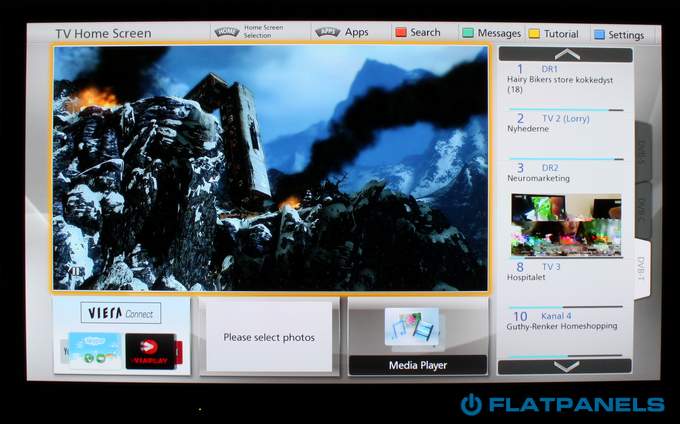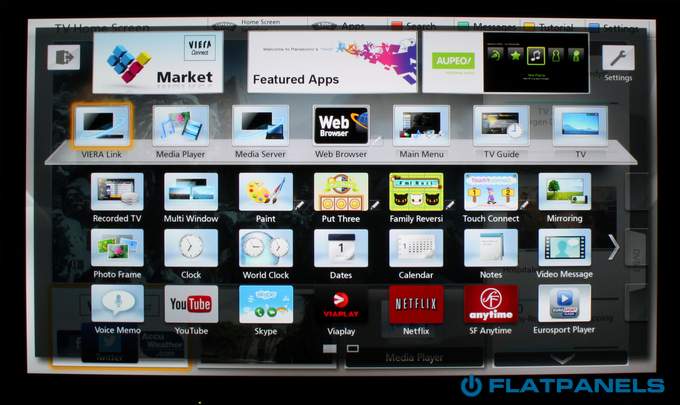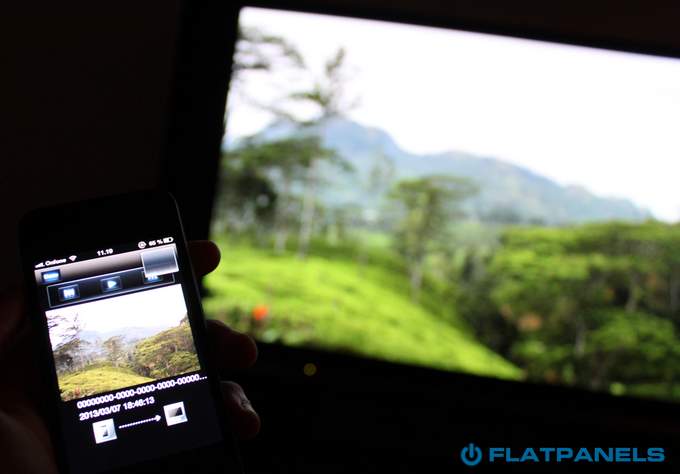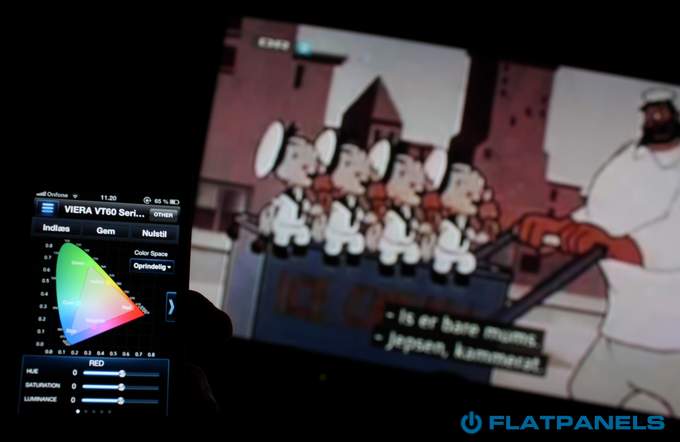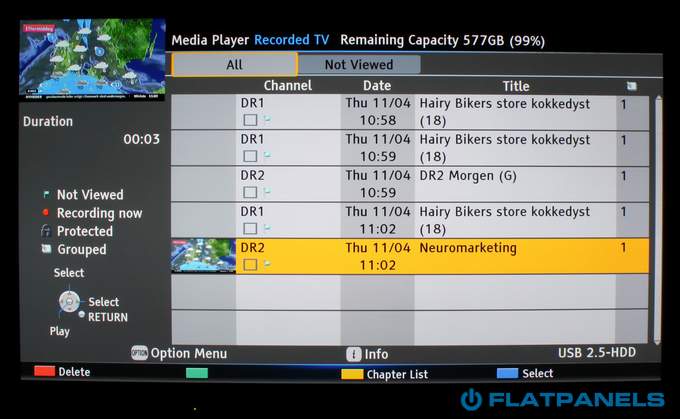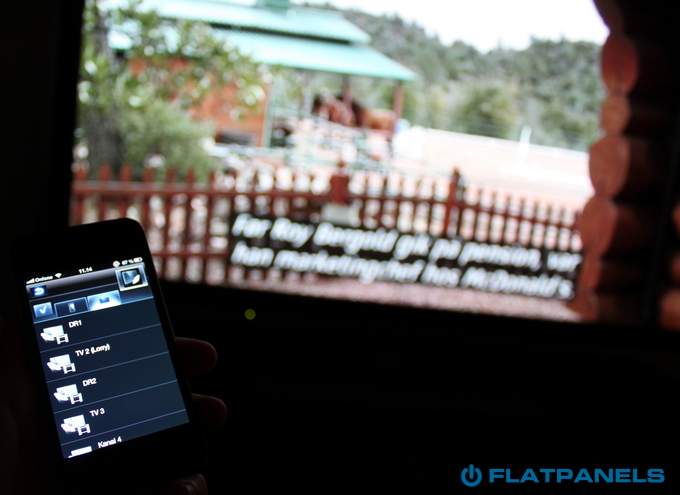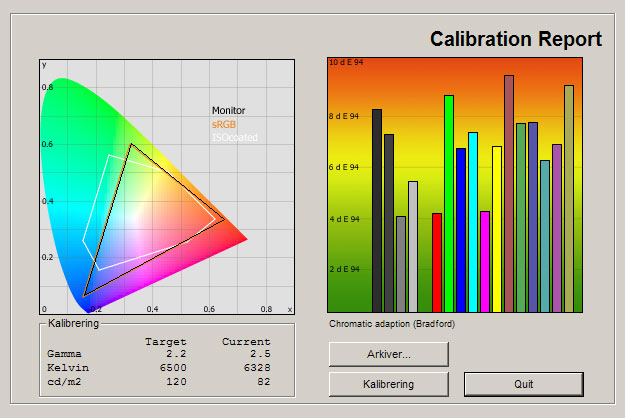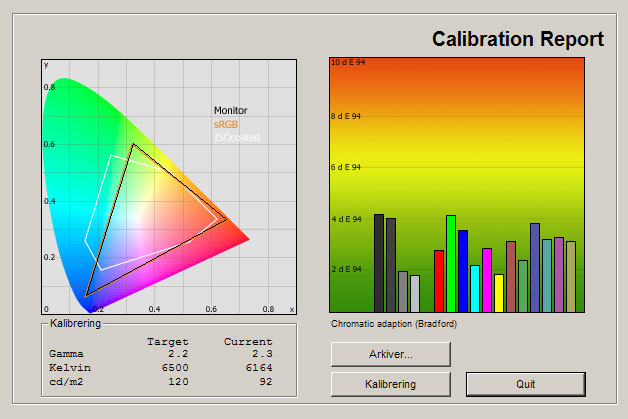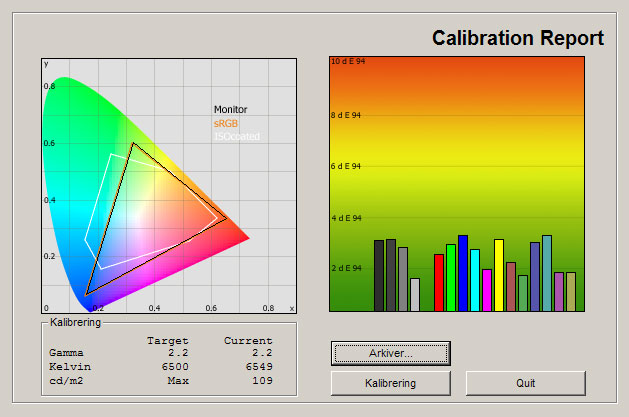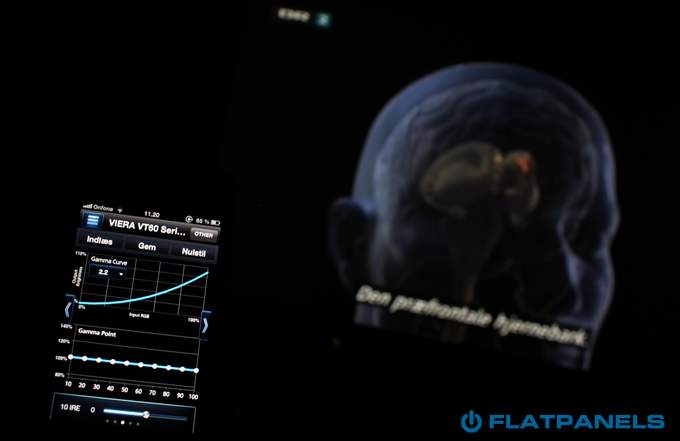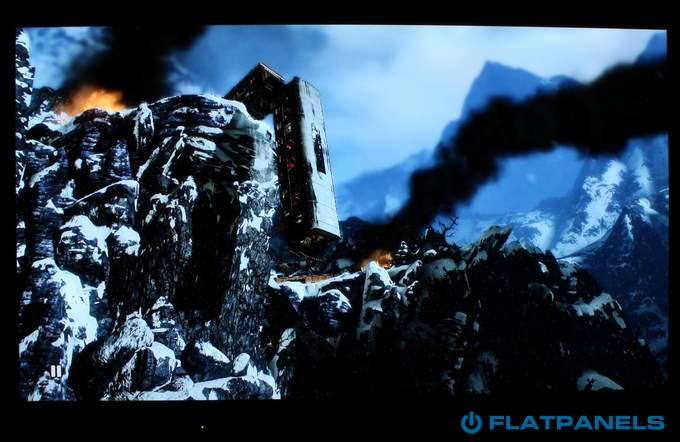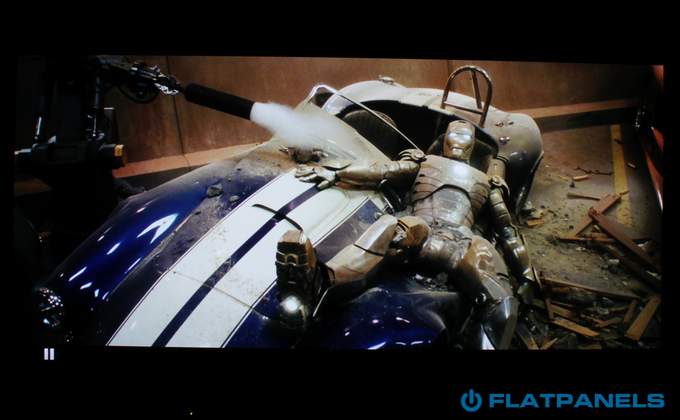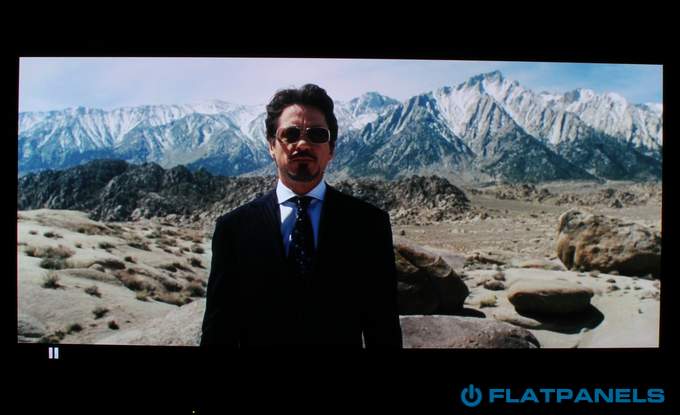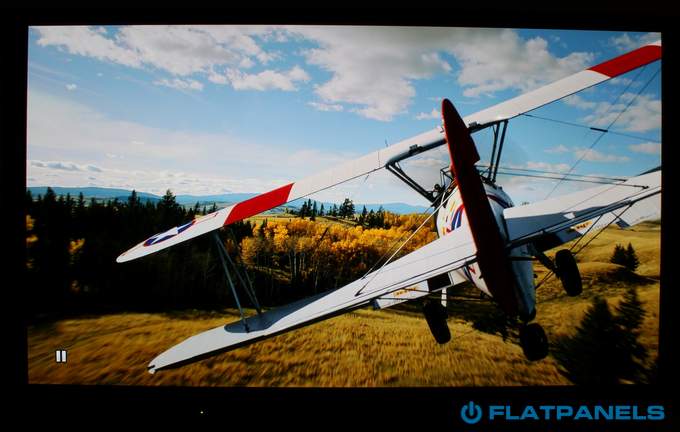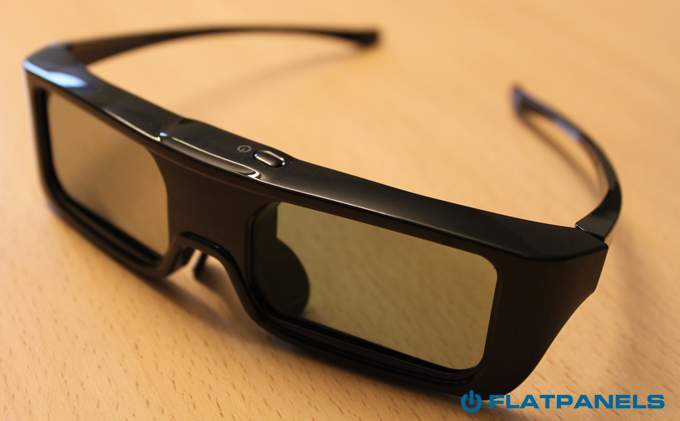Review: Panasonic VT60
Our first impressions - Test tools - Functionality - Power consumption - Calibration - Picture quality - PC & Media Center - Viewing angles - Sound - Conclusion - Debate
With the re-introduction of Panasonic’s ZT line, VT60 is no longer the most exclusive TV from Panasonic but given that ZT60 is a limited edition TV we think it is fair to still call the VT60 a flagship TV. VT60 offers Panasonic’s most advanced picture systems, including a new plasma panel and Panasonic’s Smart Viera features that have been extended in 2013 with a new, revamped Smart Viera home screen and new streaming options.
Panasonic VT60 builds on a proud tradition and previous editions have been considered the top pick amongst plasma TVs, even TV in general. Can VT60 live up to these expectations - or can it even surpass the legendary Pioneer Kuro as our reference TV? We are excited to find out so please join us.
Panasonic VT60 is available in 55, 60 and 65 inch sizes in the US, called TC-P55VT60, TC-P60VT60 and TC-P65VT60. It is available in 50, 55 and 65 inch sizes in Europe, called TX-P50VT60E, TX-P55VT60E and TX-P65VT60E.
Subscribe to our Newsletter, RSS or twitter to receive notice when new reviews are online.
Size: 50" widescreen Resolution: 1920x1080 Response time: - Contrast ratio: - Brightness: - Viewing angles (H/V): Angle Free Panel type: Plasma TV Wall mounting: Swivel stand: Dimensions (HxWxD): 70.2cm x 120.3cm x 5.0cm (without stand) Weight 31.5 kg Built-in speakers: Inputs VGA DVI (but possible to convert through HDMI)
Audio (type) (Audio in/out)
S-video Composite Component HDMI (3 inputs, 1 HDMI 1.4)
Outputs Audio (type) (1 output, headphones)
S/PDIF (optical)
Other Price and retailer:
| US retailer | UK retailer |
 |
Our first impressions
Many people still have a memory of plasma TVs as big, clunky boxes but those days are over. VT60 is not the first to change the game but Panasonic has continued to refine their TV designs by making plasma TVs slimmer and leaner - which certainly shows with VT60.In recent years we have also seen manufacturers making efforts to shave of more millimeters of the bezel. But with VT60, Panasonic takes a different approach. The bezel is actually wider than on the mid-range ST60. Instead, Panasonic has used a glass front that covers both panel and bezels. It makes the TV appear a bit wider than an average TV but still very elegant.
The build quality feels solid and the choice of quality materials is noteworthy. The base provides stability to make the swivel function feel smooth in use. There is also a camera located at the top but it is hidden whenever inactive. When someone calls you on Skype it can automatically pop op. However, when you want to hide it again you have to do it manually.
Inputs are located on the back of the TV and most point down or to the side. Only the power plug points backwards but a 90-degree power cable is included and only adds about 1˝ to 2 centimeters to depth. That should not matter much when wall-mounting the TV. One thing that may come as a surprise to power users is that VT60 only has 3 HDMI inputs. That seems like a weird decision on Panasonic’s part – at least considering that we are talking about a high-end TV here.
In the past, some users have complained about buzzing sounds form plasma TVs that are audible in a silent room, or even during TV watching. VT60 still has buzzing issues. The buzzing is a bit different compared to what we heard on ST60 but is still audible from the back and side of the TV. It was, however, not as noticeable from the front of the TV and we were only able to hear it in a completely silent room.
Test tools
Our TV signal is DVB-S (satellite) from Canal Digital and DVB-T (terrestrial). We also have an analogue TV connection. Testing is done with the DVE (digital video essentials) and Peter Finzel test DVD. Testing is also done with DVD, TV, Blu-Ray and Media center/PC.We use our own monitorTest. The software supports some of the traditional test patterns used to evaluate displays as well as some new and unique test patterns developed by the people here on FlatpanelsHD.
Sony PlayStation 3 is our Blu-Ray player.
All contrast measurements are based on the ANSI methodology.
Functionality
The remote control is left unchanged. It is actually pretty much identical to the one bundled with the much cheaper ST60 plasma TV, except that the buttons are white and back-illuminated. Nothing new to add here, besides the usual. The ugly, confusing plastic remote with far too many buttons is not exactly an ideal solution for controlling a TV with a growing list of features and even sections where you need to input text.Panasonic has also bundled a simpler and smaller remote for everyday tasks but we suspect that most people already feel they have too many remotes; not too few. The smaller remote is not a horrible idea for people who just need to change TV channels, control volume and occasionally navigate to other sections of the TV. In addition, Panasonic has added a microphone for voice commands and a touch pad at the center, but the remote does not solve the fundamental problem of remotes; the problem of controlling TVs that become increasingly advanced and feature-rich.
The voice commands are pre-defined so it does not register commands that are not pre-programmed into the TV. Therefore options are very limited. After failing to recognize “open apps”, “open Netflix”, “access Netflix”, “open Netflix app”, “turn off TV” I had to seek help in the help section only to find that very little thought has been put into this. So, instead of making it easy to open apps you can actually instead say things like “red button” in order to make the TV act as if the red button on the regular remote was pressed? Wow, that is not exactly intuitive… Even commands such as “volume up” are just puzzling. On a scale from 1 to 100 the “volume up” command will increase volume by 1. Just repeat it 30 times and you are there. To be fair, you can say “volume 30” (no words before or after, or it won’t work) to skip all that but even though the voice system is easy to use and fairly fast, we think the weak implementation makes it fairly superfluous. To really make it attractive one should at least be able to speak a normal sentence and do things like open specific apps.
We talked about the new Smart Viera platform with the new My Home Screen in our ST60 review. VT60 uses the same platform but has a much faster processor - which shows. Menu navigation is smoother and faster, and the user experience is clearly better. So, that is definitely a good thing.
We have not been convinced by Panasonic’s previous attempts to make Smart TV functionality attractive. The Smart Viera platform has felt like an afterthought and not a philosophy that has been implemented at the very core foundation of the TV. It has felt more like two divided sections where one is the traditional TV functionality and the other is a Smart Viera platform that opens up a new section. We have craved a more holistic approach; a more integrated approach. To be fair, we should probably say that this is not a specific criticism targeted at Panasonic but actually the whole Smart TV approach in the current form from all TV manufacturers. It applies to all of them; not just Panasonic. FlatpanelsHD is not against the Smart TV vision. We are actually huge proponents of bringing TVs into the internet era but we need to see a more wholeheartedly attempt that redefines what a TV is and what it can do.
Panasonic says that they have taken some of the criticism to heart by totally revamping the Smart Viera platform with a new My Home Screen. From the new Home Screen you can access not only TV apps, such as streaming services, but also TV channels. It is a more holistic approach, where My Home Screen is the Hub instead of a separate section.
However, we are still not convinced despite the much smoother experience. Very few apps are found in the app store and most of the Smart Viera features are actually developed by Panasonic or its affiliates. Smart TV – or in this case Smart Viera – is a play on the word “smartphone”. Smart as in a platform where developers can develop apps so the platform can evolve. Right now it just does not feel that way. It feels more like the equivalent to a featurephone where new features are added each year and the old TVs are left behind to wither. It is no game-changer and we still recommend that you buy your TV based on its picture quality instead of the Smart TV platform, and then add a dedicated media box such as the Apple TV or Roku; both are incredibly cheap and offer a much better and more refined “Smart TV” experience.
Panasonic offers an app called Viera remote2 for Apple iOS devices (the new version is not available on Android, WP or Blackberry), making it easier to input text and navigate through menus. The first versions of the app simply had the remote control buttons moved to the touch screen of the smartphone or tablet but the latest version actually shows some promise. Panasonic has now moved the user interface to the touch screen so you can access apps and use the phone as a touch pad. Still, it has the same frustrating issues that we commented on in our ST60 review, such as the inability to input text inside some apps, including Netflix. It cannot turn on the TV either.
The app also lets you push photos and video from your iOS device onto the TV screen, as seen above. For more information on this see the ST60 review.
However, there is one feature that we are thrilled about: the calibration section. It basically means that you can calibrate your TV from the tablet or smartphone touch screen. Not just adjust contrast but do a pretty advanced calibration with interactive graphs; something that is not possible on the actual TV. We took a look at it in this article but we will try and see how it works in the calibration section. This is exciting.
VT60 offers the same DLNA streaming options as previous Panasonic TVs and the option to enjoy media files from a USB hard drive or USB stick. As we have said before, media file support and playback is relatively poor with these built-in media players in TVs. We did put VT60 through the test with some demanding high-resolution and high bitrate avi and mkv files. VT60 did not eat the first 1080p avi. It did not like our 1080p mkv container with a H.264 profile 4.1 video inside (40 mbps video) either. We were luckier with a .mkv with 720p video in H.264 in profile 5.1. It can also handle un-embedded subtitles. An mkv container with a video encoded in VC1 was also handled correctly. So, a bit hit-and-miss here.
USB recording has been available in Panasonic’s European TVs for many generations now. It still is in VT60 but VT60 is one of the TVs with Panasonic’s new twin tuner. This is not a novel feature in the TV industry but it has never been implemented in mass market TVs before now. The twin tuner is exciting as it allows you to record two different shows at once, see another TV channel while recording or even stream one TV channels to another TV or mobile device while watching another TV channel on the VT60. Before you can record you need to connect an external USB hard drive and format it.
In practice the recording capabilities are pretty straightforward. You can record a TV show by pressing the red button on the remote or time future recordings via the EPG. You can pause live TV broadcasts and rewind to the point where you switched to the channel.
The twin tuner works very well. When starting a TV recording it gives a quick notice and you are free to switch channel or start recording a second channel. If you try to switch channel when recording two TV channels at the same time the TV asks you if you want to cancel one of them.
The twin tuner also lets you stream a second TV channel to an iPhone or iPad via the Viera remote2 app. This functionality did not work for us but we suspect that the business network in our current testing room is the culprit. It has a quite aggressive firewall that we were unable to bypass. We have seen it in action several times before and it works very smoothly. You can even change channels and control audio volume separately on the TV and mobile device. The TV channel streaming even lets you watch a TV channel from the VT60 on another TV. It does not necessarily have to be a Panasonic TV but it needs a recent DLNA implementation to work.
Energy consumption
| Compare power consumption measurements on different TVs and monitors with our interactive power consumption applet here. |
 |  | |
| Standby | 0.0 W | 0.0 W |
| SD+HD | 174 W | 183 W |
| 3D | 235 W (in Normal) | 285 W (in THX 3D) |
After calibration we measured power consumption to 183 W on the 50-inch version. This is roughly on par with last year’s VT50. Power consumption during 3D use has increased a bit, probably due to a slightly higher brightness level in the THX 3D mode.
Calibration on Panasonic VT60
Below you can see an out-of-box measurement in the Standard mode without the light sensor activated.| The graph says this: The number on the left is the delta value. Delta is a difference between two factors; here it’s the difference between the measured color on the panel and the actual color that is our target. |
The out-of-box settings are not very impressive and after looking through the picture menus we can understand why. All of the dynamic picture “enhancement” are activated, which seems to boost color intensity to extreme levels. It has not always been like this for Panasonic so we consider it a bad trajectory for a company that has always been pretty committed to correct picture quality. Well, as long as we can just change to a different profile and correct the issues it does not concern us too much.
We changed to the THX Cinema mode and took a new reading.
The THX Cinema profile is a huge improvement compared to the Standard profile. Colors are very accurate and everything seems in line with what we expect with only very small deviations. There is not much to say here. The THX profile acts just like we had expected and is similar to the THX modes on previous years’ models (which is obviously the point).
As usual, Panasonic has also implemented a THX Bright Room profile. We also measured how the THX Bright mode performed and just like last year it is very similar to the THX Cinema profile, although with a higher brightness level that has been achieved by boosting gamma slightly in bright colors to compensate for brightly lit living room conditions. You might prefer THX Bright Room in a living room but THX Cinema is recommended for other viewing conditions.
Lastly, we calibrated VT60 to squeeze the last few percent out of it and to try the calibration options offered in the Viera remote2 app.
We did not see huge improvements - which was expected - but the calibration options offered in the iOS app are exciting. One could argue that there is no need for this functionality as long as Panasonic offers a pre-calibrated THX mode but it is nevertheless an interesting addition that we found more user-friendly than having to navigate through the menus with a remote.
From the app you can quickly adjust the different settings and apply them separately for each input. Especially the IRE10 to IRE100 adjustments can be made much faster and easier via the app.
Another new setting option we discovered in the menu was “panel luminance setting” that allows us to control the overall luminance/brightness level of the panel. This is the first time we have seen such a setting on Panasonic’s TV and it is actually quite useful. It has a low, mid and high option, with low being the default option. If changed to high the panel gets considerably brighter, which is nice if you want to use the TV in for example a brightly lit living room.
Below are our calibrated settings.
 | |
| Viewing mode: | Professional1 |
| Contrast | 60 |
| Brightness | 0 |
| Colour: | 50 |
| Sharpness: | 0 |
| Color temperature: | Warm |
| Vivid Color: | Off |
| Color remaster | Off |
| Ambient sensor | Off |
| Noise reduction | Off |
| MPEG Remaster | Off |
| Resolution remaster | Off |
| Caption smoother | Off |
| Brilliance enhancer | Off |
| Intelligent Frame Creation | Off |
| Panel Luminance setting | See above |
| Adaptive gamma control | 0 |
| Black expander | 0 |
| Gamma | 2.2 |
| 16:9 Overscan | Off |
| R-Gain | -2 |
| G-Gain | -3 |
| B-Gain | +4 |
| R-Cutoff | 0 |
| G-Cutoff | -1 |
| B-Cutoff | +1 |
Note: Some setting options are not active before you enable ISFccc in the Setup menu. The Ambient light sensor option has been set to Off in the menu. Plasma TVs’ Eco functions work in a different manner than on LCD-TVs, and plasma TVs cannot reach the same brightness levels. Therefore the sensor is not desirable.
Picture quality on Panasonic VT60
| In this section I go through picture quality with the calibrated settings. |
Panasonic VT60 uses an anti-reflective filter to improve picture performance in brightly lit rooms or in rooms with heavy artificial lighting. The filter is actually integrated in the front glass and is therefore different than on the cheaper ST60. It did a fairly good job in reducing reflections but most importantly it managed to maintain color and contrast intensity even in challenging room conditions. This has been a real problem for plasma TVs in the past as light tends to make colors appear dull and washed out. VT60 is still at its best in more controlled light environments but is definitely not a bad choice even for a living room.
Color reproduction is great but not perfect. As always, plasma has some issues with dithering noise in mostly dark colors and we found that to be the case on VT60, too. From a typical viewing distance of 2 meters (we tested the 50 inch) we were able to spot it but we know that there are many opinions on this and it is true that it is rarely seen during motion. Overall, color reproduction is great and we just complain because we are perfectionists. To clarify we should probably say that VT60 deserves praise and that it even managed to improve things over ST60 in this area.
SD picture quality is excellent and has all of the same characteristics of last year’s VT50. Detailing is high and picture depth is fantastic due very deep blacks that we will talk more about in shortly. We are also happy to see that motion reproduction is as good as ever, but more importantly that Panasonic seems to have fixed the 50 Hz issue that users have been reporting in the last few years. This will most likely be a huge deal for some users.
HD picture quality is also fantastic. Blu-ray handling is exemplary and HD channels are reproduced with a very high level of clarity even during motion where VT60 manages to reproduce all the details, unlike all high-end LED/LCD TVs that still have some blurring issues.
There is not much new to say about motion reproduction in general. Phosphor trailing is very low - but not eliminated. The performance is pretty much on par with last year’s VT50 (expect 50 Hz performance that has been improved, as discussed above) and the detailing level is close to perfect. We did notice the phosphor trailing in our black/white game tests but never during movies.
Input lag was measured to 24-30 ms in the game mode, without the many dynamic picture circuits. This is an improvement over the ST60 and a quite good result for gamers. The goal is obviously to reach 0 ms but even at 20-30 ms gaming performance is great.
All in all, VT60 is one of the best TVs for gaming, sports and general fast-paced movie/TV watching due to the excellent motion performance.
We have complained about pixel noise on plasma TVs since, well, forever. VT60 does not make us change our mind about this but we did notice an improvement over the ST60 in a side-by-side comparison test. Still, we feel that Panasonic needs to address this issue in the future.
Retention is also a concern for many buyers and as we discussed in our ST60 review it seemed to return after 3D was introduced, especially on the VT20. However, we never really felt bothered by retention with VT60. Even our stress tests revealed nothing critical and we only saw a very mild retention image after more than an hour, and it disappeared before we had time to examine it. However, we also know that retention can affect some users more than others, depending on their viewing habits so this is an area where we need user reports to get a clear picture of things, but at least we did not spot anything critical.
Below we have measured black level and contrast.
 |  | |
| Black level | 0.00 cd/m2 | 0.00 cd/m2 |
| Brightness | 82 cd/m2 | 114 cd/m2 |
| Contrast ratio | - | - |
Contrast ratio +/- 50
We recently published our review of the Panasonic ST60 that had amazing black reproduction; far better than what we had expected from a mid-range TV. That obviously made us eager to find out how VT60 performed, as it would have to pretty much reach perfection to top ST60.
Well, what can we say? A full black screen is not pitch black but pretty damn close; as close as we can get to perfection without reaching the ultimate goal. We had a chance to test the ST60 and VT60 TVs side-by-side and we might have been able to spot a tiny, tiny difference, but really, we are not sure. And it does not really matter much. At these levels black is so deep that it is impossible to spot an improvement in anything else than theoretical test patterns. During movies and games, black is pretty much perfect.
Black looks a bit less intense during daytime due to a minor fall in contrast.
Shadow detailing is also improved over the ST60. We had a chance to compare directly with ST60 and VT60 manages to reproduce the darkest tones with less dithering noise and a tiny bit more precision. To be fair, we should probably say that the difference is fairly small but that probably says more about ST60 than VT60.
Panasonic VT60 has no issues with light homogeneity, which is not really surprising as this is classic LCD problem. We did not notice any floating blacks issues either and our black testing screen was nicely reproduced with VT60’s very impressive black level.
3D picture quality on Panasonic VT60
| We used the PlayStation 3 and a 3D Blu-ray player to test 3D movies and 3D games. In this test we want to examine 3D depth, 3D picture quality and 3D crosstalk. |
Panasonic VT60 relies on active 3D technology that requires expensive shutter glasses with batteries that also tend to flicker during daytime. The active 3D system has a higher detail level compared to the passive 3D system used in many LCD-TVs but some find the 3D experience unpleasant due to the flickering of the glasses.
3D picture quality is fairly good but not significantly better than what we saw on the ST60. Panasonic has not made huge improvements compared to last year and we were still able to spot 3D crosstalk if we looked carefully. Also, at times the 3D depth is a bit “out of sync” it seems, making some background or foreground objects appear a bit off. This is nothing new and it has been like that on all of Panasonic’s 3D plasma TVs.
Still, these are fairly minor issues and 3D picture quality is pretty much top of its class. We still do not favor the active 3D glasses that are a bit hard on the eyes and mind but there is no arguing that 3D picture quality is clearly better than on LED/LCD 3DTVs. VT60 is probably the best 3D TV we have seen so far but do not expect huge improvements in this field if you already own one of Panasonic’s plasma TVs from the 2011 or 2012 line-up.
VT60 also has a THX 3D mode, which is actually quite good in terms of color accuracy. However, it also has a bit more dithering noise compared to some of the other profiles. The noise is mildly distracting form a distance of 2 meters but becomes less evident from a more typical viewing distance.
PC and Media Center
In order to achieve 1:1 pixel mapping you need to select the aspect ratio called “16:9" in the TV settings. You also need to deactivate 16:9 Overscan.Viewing angles
Viewing angles have not been a major issue on plasma TVs throughout the years. Some years ago certain picture elements – such as white text on black background – could reflect between layers in the panel when the TV was watched from an extreme angle but this is not an issue any longer.The colors stay vibrant and we experienced no loss in contrast either when watching TV from the side. No need for pictures to document this effect. VT60 behaves like recent plasma TVs from Panasonic.
Sound quality
The speaker system has more punch and depth than what we heard from the cheaper ST60. The speakers are definitely more capable and voices are fairly clear during dialogue.However, it is obviously still in no way comparable to a real HiFi system and we suggest you prepare yourself for that. If you want proper audio to match the amazing picture quality you still have to connect external speakers but the speaker system is fine for sporadic TV use and even everyday movie watching.
Conclusion
VT60 uses Panasonic’s so-called Hexa processor to improve performance and add features to the Smart Viera platform. We recently tested the mid-range Panasonic ST60, which we found to be a bit slow and limited. VT60 is noticeably faster and the new additional features are great; especially for Europeans who get USB recording and twin tuner functionality (in some countries). Still, the Smart Viera platform leaves a lot to be desired and our recommendation is still to consider VT60 for its picture quality elements and not the Smart Viera features.Many picture quality enthusiasts have eagerly awaited Panasonic VT60 and after we recently tested the ST60, we were also very excited to see what VT60 had to offer. VT60 does not disappoint. It is without doubt Panasonic’s best TV to date and it comes with the same amazing inky deep blacks as the ST60 while taking performance up one or two notches in most other areas. The THX profiles are great and the improved filter makes VT60 more than suitable for a bright living room. We also found it to have better shadow detailing and less dithering noise. 2D picture quality is fantastic and 3D picture quality if great, too.
Panasonic VT60 is not perfect and it still suffers from some dithering noise and we would also love to see overall panel brightness go even higher but those are minor concerns. We also have to say that the difference between VT60 and Panasonic ST60 is less pronounced than in the past but that probably says more about ST60 than it says about VT60. And since VT60 takes picture quality to an even higher level we hereby award it with our Reference Award. Not since the Pioneer Kuro have we given out our Reference Award to a TV. VT60 is that good - it has deserved our praise.

Press the award logo to learn more.
Price and retailer:
| US retailer | UK retailer |
 |
 |  |  |
| Amazing 2D picture quality | Still dithering noise | Living room |
| 50 Hz bug resolved | Smart Viera still not convincing | Home Cinema |
| Anti-reflective filter | Not huge improvement over ST60 | |
| Amazing black depth | Only 3 HDMI ports | |
| 3D picture quality | Flicker from 3D glasses | |
| Twin tuner features |

